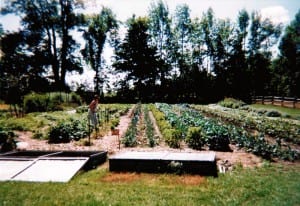 There is considerable variation in the amount of research available on organic food trends in different countries and regions. In general, more research has been done on those regions where consumer demand for organic produce is greater. A large majority of the studies aim to measure the frequencyof organic purchases and to define marketing segments.  From our case studies it can be seen that a sizable amount of research is available on Denmark and the UK.
There is considerable variation in the amount of research available on organic food trends in different countries and regions. In general, more research has been done on those regions where consumer demand for organic produce is greater. A large majority of the studies aim to measure the frequencyof organic purchases and to define marketing segments.  From our case studies it can be seen that a sizable amount of research is available on Denmark and the UK.
Organic Food Trends: Â Research on consumers and organic food
This research includes large-scale marketing surveys, and quantitative and qualitative research. It covers organic food trends in general, as well as different types of food product.  There is also extensive research on related issues such as animal welfare, consumer perceptions of quality, and safety issues etc. Still, a more thorough understanding of the way in which consumers choose and use organic food in the context of everyday life would be useful.  There seems to be a need for better accounts of consumers’ perceptions of key concepts in food preference – concepts such as health, safety and food quality – and of consumers’ motives and assumptions in buying organic food.  For Italy, much less research on organic food was found, and the little that was located was mostly quantitative. Commonly, in the Italian studies, relatively small samples were used.  Some Italian studies recruited respondents from certain types of food shop, and in specific geographical areas, and a limited number of food types were examined. Consumer research on organic food consumption in Hungary barely exists, and the findings we gained access to were at best tentative.
Organic Food Trends: Consumer characteristics and buying behavior
When considering characteristics of consumers buying organic food, one needs to keep in mind the interplay of several factors. Structural factors, such as availability of products in the various market channels, price, quality and types of product offered, as well as factors relating to attitudes among various actors in the food system, including the values and preferences of consumers, are likely to exert influence simultaneously. In isolation, each of these factors might give a misguiding picture.
There is a clear tendency to identify younger age groups as the most typical consumers of organic food, while, for example, in the UK, older age groups are also found to be important. (This may reflect that the organic market in the UK is relatively mature: the phenomenon of older people joining the bandwagon of demand is a known general trend). It could also indicate  that other aspects of organic food (like health) are being emphasized. We know that older consumers tend to be more concerned with health, while the younger ones pay more attention to environmental issues etc. Further, there is a clear tendency to find significantly higher levels of demand in major cities than in smaller towns and country areas, and a very clear tendency for there to be significant over-representation of persons with higher levels of education.  This differential seems, however, to level out when organic consumption becomes mainstream.
Organic food trends with regard to income and gender are less clear, but there is an indication that, in less mature markets, women and those with higher income levels are overrepresented.  Denmark and the UK are the most mature markets among our cases. Here a large majority of the consumers are familiar with organic food Trends and have bought it on a more or less regular basis. There is reference to a “core-group†of consumers in both countries. These consumers acco
unt for a considerable portion of organic sales. They may also differ from less regular consumers in their relative emphasis on various motivational factors, and in having more clearly defined and cogently pursued motives for buying organic food.
Organic Food in Denmark and United Kingdom
Two main pathways in the provision of organic food are evident both in Denmark and the UK. On the one hand, there is the mainstreaming of organic foods, in which foods are often processed by major food industry companies and sold in supermarkets. On the other hand, there are a variety of decentralized sales arrangements. These usually involve a shorter distance between producer and consumer and are sometimes seen as part of a “local food movementâ€. Conventional, mainstream distribution accounts for the large majority of organic sales, but the locally based channels nevertheless represent a qualitatively different consumer alternative, and are also more widespread in some other countries35.
Organic Food in Italy
In Italy, where the organic market is relatively new, these two distributional pathways can also be observed, but the food market in general is more decentralized, with small-scale food shops having a larger share. There are large regional differences in Italy, where the bulk of consumption of organic food takes place in the North while production is mainly confined to the South.
Organic Food in Hungary
In Hungary, the development of organic production has focused on and strongly favors export markets, while domestic consumption is very limited. Higher prices for organic food (partly exaggerated by successful exports), combined with relatively low purchasing power among consumers, make organic food an unrealistic option for the majority of consumers.  Organic food is bought in some specialty shops, or directly from the farm, and there are some indications that people suffering from certain illnesses are among the pioneer consumers.